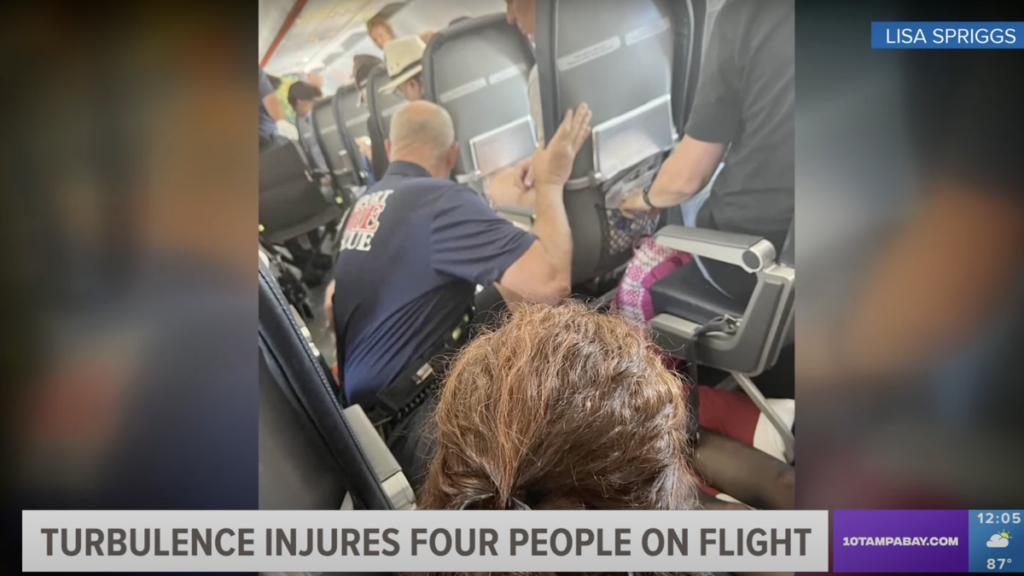Plane Drops 8,000 Feet, Injuring Four Passengers

Four people ended up in the hospital Wednesday after intense turbulence rocked their flight into Florida from North Carolina. It’s the most recent in an increase of disastrous flights causing injuries due to unprecedented turbulence.
Both passengers and crew suffered broken bones and other injuries during a particularly bumpy ride from Asheville Regional Airport in North Carolina to Florida’s St. Petersburg-Clearwater. In the final 20 minutes of the flight, the plane dropped some 8,000 feet, causing people to leap out of their seats and hit their heads on the ceiling of the plane. Paramedics transported two flight attendants and two passengers to the hospital as soon as the plane landed, the New York Times reports. Six more passengers out of the 179 onboard were checked over by first responders but did not require hospitalization.
The juddering occurred near the last leg of the flight, when the crew was conducting its final walk-throughs, said Elizabeth Spriggs, a passenger who sat near the back with her son. The first shock dropped a passing flight attendant to the ground. Then came the second, a steep plunge that flung laptops and “catapulted” the felled flight attendant into the air, she said.
“It was like watching ‘The Matrix,’” Ms. Spriggs, 57, said. “We watched her go up in the air and float probably for a second.”
If it seems like stories of turbulence taking out people on planes are becoming more common, it’s not your imagination. The Federal Aviation Administration reports that 17 people were seriously injured due to turbulence last year — the highest year every recorded. In December, a flight to Hawaii ended with 20 people needing hospital treatment after hitting a rough patch of sky. In March a bumpy ride from Austin to Frankfurt, Germany in March of this year sent seven people to the hospital.
A study from the University of Reading in the UK found a spike in turbulence over the last four decades. Since 1979, total annual duration of severe turbulence experienced by travelers in the North Atlantic has jumped a staggering 55 percent. Another study found instances of turbulence could triple by 2050 because of, you guessed it, a rapidly warming world. This increase particularly affects a kind of invisible turbulence known as clear-air turbulence. Normally pilots can radio in stretches of wind sheer to warn other flights, but this form of turbulence is much less predictable. Warmer air and an increase in carbon dioxide is disrupting the Jet Stream and causing stronger changes in both vertical and horizontal wind sheer.
While the FAA and the National Transportation Safety Board is investigating the incident, right now there isn’t much to be done to combat this invisible threat. The FAA recommends staying in your seat with the seatbelt on, especially when the light is illuminated, but that’s not much comfort to flights that hit sudden and unexpected wind sheer.
Turbulence, of course, isn’t the only headache facing airline travelers; a shortage of everyone from airline mechanics and manufacturers to flight crews to air traffic controllers is leading to record-breaking delayed and canceled flights. Often airlines blame bad weather for these cancelations, but that’s not always the case. Still, as weather on Earth become more intense, we can expect more delayed or dangerous flights in the future.







